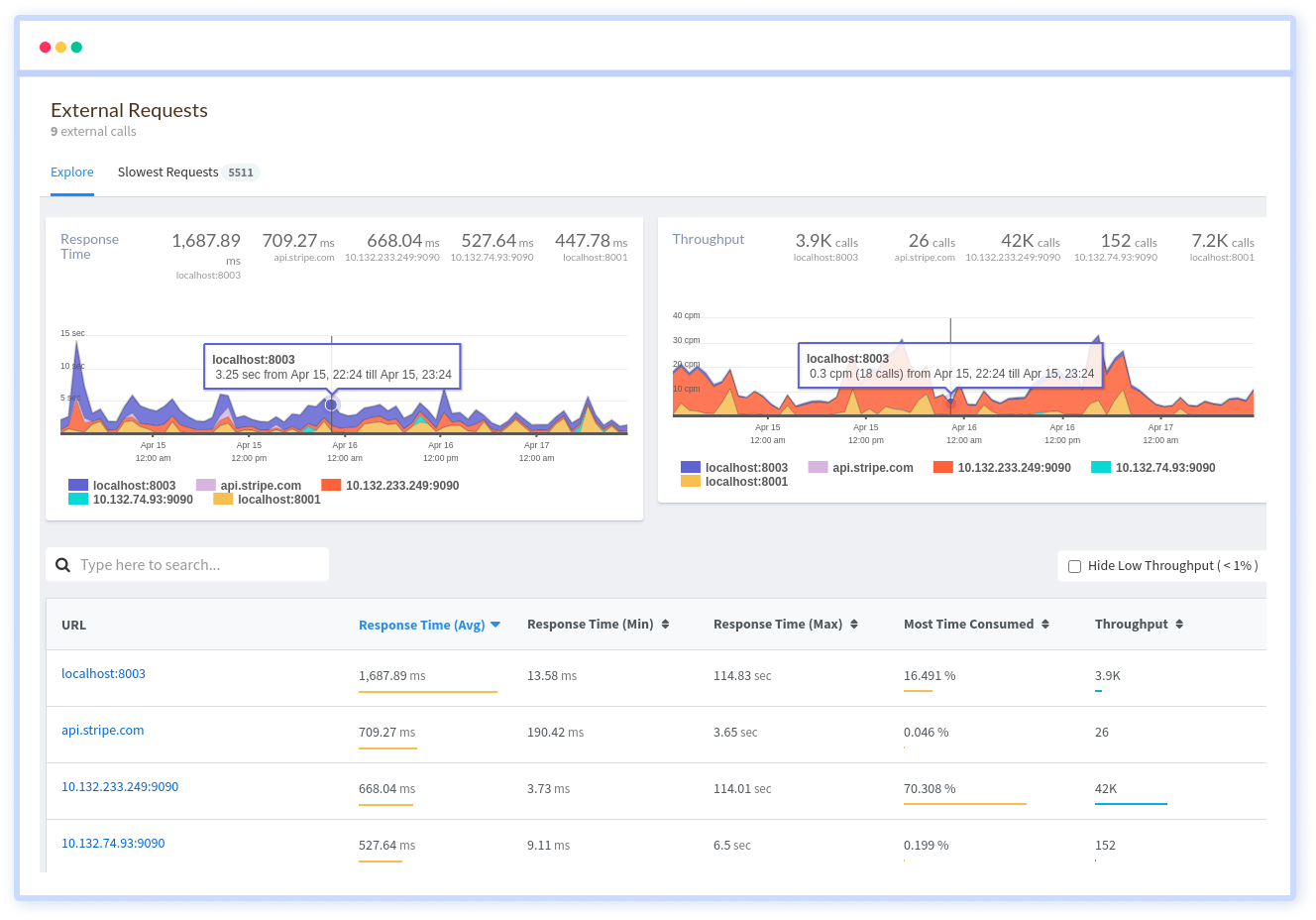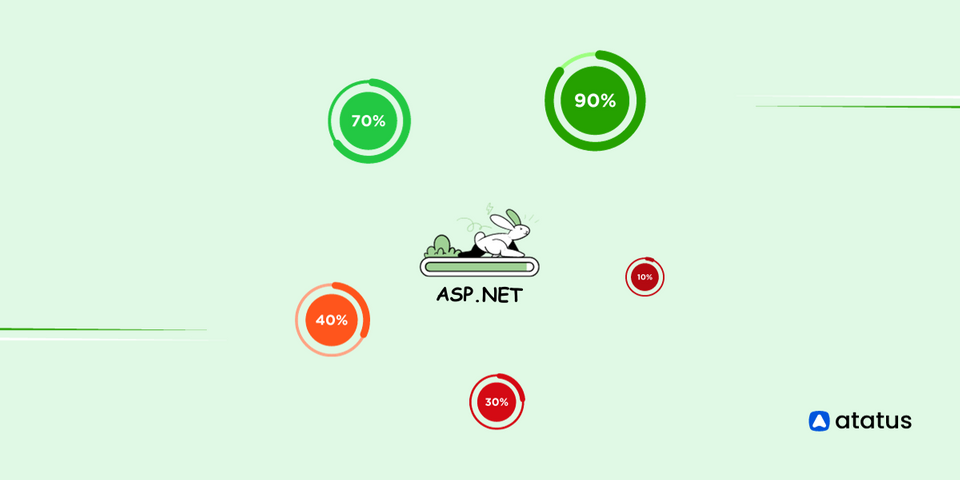10 ASP.NET Performance Tuning and Optimization Tips
Web development is a vibrant field where innovation and technology converge to shape the digital landscape of tomorrow. In the field of creating websites and apps, ASP.NET stands as a versatile framework, offering robust tools and features to optimize website performance and enhance user experiences.
Despite ASP.NET's versatility, its performance may occasionally lag suffer due to diverse strategies that can notably affect load times, user interaction, and overall site responsiveness. From efficient handling of images to fine-tuning server-side configurations, optimizing a website's performance remains a cornerstone for enhancing user experience.
This comprehensive approach not only caters to faster loading but also aligns with SEO priorities and improves scalability. By focusing on diverse aspects like image optimization, EnableViewState configurations, JavaScript and CSS streamlining, server-side techniques, and client-side data management, websites can achieve higher efficiency and user satisfaction.
Let's delve into this blog to explore various tuning tips aimed at enhancing the performance of ASP.NET, ranging from efficient image handling to server-side configuration refinements, all crucial for an improved user experience.
- Optimizing Image Use for Faster Loading
- EnableViewState Settings
- Global JavaScript and CSS Optimization
- Minification
- Optimized Server Communication
- Caching Efficiency
- Content Delivery Network (CDN)
- Asynchronous Calls
- Efficient Garbage Collection
- Minimizing Client Side Data
1. Optimizing Image Use for Faster Loading
Excessive usage of images can significantly slow down website performance, particularly on slower connections. Using lightweight, compressed images maintains visual appeal while reducing file sizes.
Employing image sprite, merging multiple small images into one larger file, and displaying only necessary portions through CSS can limit server requests. These strategies mitigate load times by diminishing the volume of data to be transferred, enabling faster rendering.
a. Use the right image format: Choose between JPEG, PNG, GIF, and other formats based on the type of image.
b. Resize images: Make sure images are not larger in dimensions or file size than necessary for their display on the website.
c. Implement lazy loading: Load images only when they are visible in the user's viewport.
d. Compress images: Reduce the file size of images without compromising quality.
e. Use responsive images: Serve different image sizes for different devices and screen resolutions.
2. EnableViewState Settings
EnableViewState is a feature in web development that allows the server to remember and send back the details of the user's interactions with a web page. This is useful for maintaining the state of controls like text fields, checkboxes, and other elements, ensuring they stay the way the user left them. It's like a memory aid for the server to recreate the page as the user last saw it.
However, enabling EnableViewState has some trade-offs. It adds extra data to the page, making it larger, and can affect performance, especially when you have many controls on the page, like in a user registration form.
- Control Level: Enables or disables
EnableViewStatefor individual controls on a web page. - Page Level: Sets
EnableViewStatefor all controls on a specific page within a web application. - Config Level: Configures
EnableViewStateglobally, applying settings to all pages and controls unless overridden at the control or page level.
3. Global JavaScript and CSS Optimization
Optimizing JavaScript and CSS loading across a website significantly impacts its overall performance and user experience. These global optimizations affect every page, ensuring a consistent improvement in loading times, user interaction, and functionalities site-wide.
Users experience faster load times and smoother navigation, positively influencing engagement and retention. Moreover, enhanced site speed due to these optimizations boosts SEO, as search engines prioritize faster websites.
By focusing on these global elements, the benefits extend universally, enhancing the entire site's efficiency, user satisfaction, and search engine visibility.
a. Combine and minify files: Merge multiple JavaScript and CSS files into a single file for reduced HTTP requests and minify them to reduce file size.
b. Use asynchronous loading: Load scripts asynchronously to avoid blocking the rendering of your page.
c. Leverage Content Delivery Networks (CDNs): Serve popular libraries (e.g., jQuery) from CDNs to benefit from browser caching and faster loading.
4. Minification
Minification streamlines web code by removing unnecessary elements like spaces, comments, and long variable names, reducing file sizes for quicker webpage loading.
Before compression:
function calculateAreaOfCircle(radius) {
var pi = 3.14159;
var area = pi * radius * radius;
return area;
}
After compression:
function calculateArea(r){var a=3.14159;var b=a*r*r;return b;}
The minified version retains functionality but uses shorter variable names ('pi' becomes 'a') and removes extra spaces, aiding faster transmission and execution. This optimization applies across HTML, CSS, and JavaScript, improving website performance without altering functionality.
5. Optimized Server Communication
Server.Transfer in ASP.NET reduces round trips between the server and user's browser, streamlining internal page transfers. This minimizes network traffic and server load, enhancing performance by efficiently handling transitions solely within the server environment.
a. Use AJAX for data retrieval: Employ asynchronous requests to fetch data without reloading the entire page.
b. Reduce unnecessary postbacks: Minimize the data sent to the server and limit full-page postbacks.
6. Caching Efficiency
Caching is the practice of storing often-requested information, in a swiftly accessible temporary space. Rather than repeatedly fetching data from the main source, this pre-rendered data is saved in a cache.
When users seek this information again, the cached version is swiftly delivered, significantly reducing retrieval time. Periodic updates ensure the cached data remains current
This method optimizes server performance, lessens the load on the main database, and provides users with quicker, consistent access to frequently accessed content. Effective cache management is vital, including setting expiration times and ensuring data accuracy.
a. Implement server-side caching: Cache frequently used data and pages on the server to reduce database and rendering overhead.
b. Use client-side caching: Leverage browser caching by setting appropriate cache-control headers.
7. Content Delivery Network (CDN)
Although data can travel incredibly fast, its efficiency in reaching users significantly improves with physical proximity. Content Delivery Networks (CDNs) deploy edge nodes near users' locations, reducing the distance data needs to travel.
This localization minimizes delays and latency in accessing information. Even with data traveling at high speeds, the physical distance can still impact delivery times.
Therefore, the emphasis is on the advantage of having data closer to users, underscoring the importance of reducing this physical distance to ensure quicker and more efficient access to information.
8. Asynchronous Calls
Synchronous calls halt program execution until a task completes, similar to waiting on a call. Asynchronous calls initiate tasks and proceed without waiting for completion, similar to leaving a message and continuing other calls. This non-blocking approach allows concurrent handling of multiple tasks, preventing idle time.
Threads can process new requests while waiting for responses, promoting more efficient resource utilization. Asynchronous programming facilitates scalability by enabling a system to manage numerous simultaneous operations without getting bottlenecked by one task, ensuring better responsiveness and overall performance in applications dealing with multiple concurrent requests.
9. Efficient Garbage Collection
Garbage collection in ASP.NET, a crucial component of the .NET framework, aids in memory management by automatically identifying and reclaiming unused memory. This process prevents memory leaks, enhancing application performance and scalability. Tuning ASP.NET involves optimizing garbage collection parameters such as generation sizes, thresholds, and collection modes.
By fine-tuning these settings, developers can minimize interruptions caused by garbage collection cycles, ensuring smoother application performance and reduced latency. Effective garbage collection configuration promotes efficient memory usage, enabling ASP.NET applications to deliver better responsiveness and overall stability.
10. Minimizing Client Side Data
Avoiding bulk data storage on the client side in ASP.NET boosts performance by reducing network overhead, enhancing security, and improving user experience. Employ server-side pagination, client-side caching, and compression techniques. Transmit only necessary data, optimize retrieval, and minimize client-side data to ensure faster loading times and smoother operation.
Conclusion
Achieving optimal performance is not just a technical feat but a vital aspect in ensuring a seamless user experience. Strategies encompassing image optimization, EnableViewState configurations, global JavaScript and CSS enhancements, server-side streamlining, and effective client-side data management collectively contribute to faster load times, improved user interaction, and site scalability.
These techniques, ranging from fine-tuning server configurations to implementing efficient data management, not only improve the speed and responsiveness of websites but also align with modern SEO priorities, ensuring an enhanced web presence. By prioritizing these performance optimizations, web developers can craft a more efficient, responsive, and user-friendly online environment.
Monitor Your .NET Application with Atatus
Ready to take your ASP.NET application to the next level? Look no further than Atatus! It's the ultimate tool to monitor and supercharge your .NET app, giving you the insights you need for exceptional performance.

Here are few technical benefits you'll love:
- Real-time Performance Insights: Monitor your .NET application's performance in real-time.
- Faster Issue Resolution: Identify and fix issues promptly to enhance user experience.
- Scalability Optimization: Ensure your app scales efficiently with resource allocation insights.
- Improved User Satisfaction: Maintain a high-quality user experience and minimize downtime.
- Error Tracking: Track and troubleshoot application errors for better reliability.
- Custom Alerts: Receive instant notifications when performance metrics deviate.
Atatus offers robust .NET performance monitoring, providing essential insights for optimizing your applications. With its comprehensive features, you can efficiently identify and resolve performance issues, ensuring a smoother user experience.
If you are not yet an Atatus customer, you can sign up for a 14-day free trial.
#1 Solution for Logs, Traces & Metrics
APM
Kubernetes
Logs
Synthetics
RUM
Serverless
Security
More





